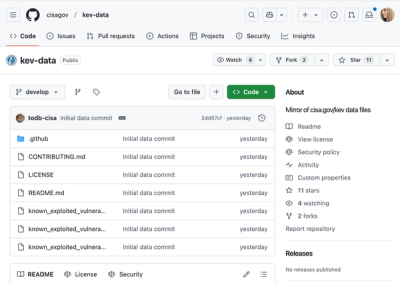
Security News
PyPI’s New Archival Feature Closes a Major Security Gap
PyPI now allows maintainers to archive projects, improving security and helping users make informed decisions about their dependencies.
nz.net.ultraq.thymeleaf:thymeleaf-layout-dialect
Advanced tools
A dialect for Thymeleaf that allows you to use layout/decorator templates to style your content.
A dialect for Thymeleaf that lets you build layouts and reusable templates in order to improve code reuse.
All of the latest documentation on the layout dialect can be found on the dedicated docs website at https://ultraq.github.io/thymeleaf-layout-dialect/
For version 1 docs which supported Thymeleaf 2, the classic readme still exists over on https://github.com/ultraq/thymeleaf-layout-dialect/tree/1.4.0
The Thymeleaf Layout Dialect adds the ability to decorate templates -
automatically for the <head> section of an HTML template, and explicitly
through extension points that developers can add to their templates. This all
adds up to create layouts that can be extended in a manner similar to classical
inheritence.
For example, given a common layout.html file, set some shared static assets in
the <head> and define extension points in the body with the layout:fragment
processor:
<!DOCTYPE html>
<html xmlns:layout="http://www.ultraq.net.nz/thymeleaf/layout">
<head>
<title>Layout page</title>
<script src="common-script.js"></script>
</head>
<body>
<header>
<h1>My website</h1>
</header>
<section layout:fragment="content">
<p>Page content goes here</p>
</section>
</body>
</html>
Create a content template that will define its own title, static resources, and
replacements for those extension points. Link the page to the layout by using
the layout:decorate processor at the root element of the page which will
instruct Thymeleaf to decorate the layout with this template:
<!DOCTYPE html>
<html xmlns:layout="http://www.ultraq.net.nz/thymeleaf/layout"
layout:decorate="~{layout.html}">
<head>
<title>Content page</title>
<script src="content-script.js"></script>
</head>
<body>
<section layout:fragment="content">
<p>This is a paragraph from the content page</p>
</section>
</body>
</html>
When Thymeleaf processes your content template, the resulting HTML will be:
<!DOCTYPE html>
<html>
<head>
<title>Content page</title>
<script src="common-script.js"></script>
<script src="content-script.js"></script>
</head>
<body>
<header>
<h1>My website</h1>
</header>
<section>
<p>This is a paragraph from the content page</p>
</section>
</body>
</html>
Check out the getting started guide to learn how to add the layout dialect to your Thymeleaf project, or read up on the many processors for more ways of how the layout dialect can help you build your templates.
FAQs
A dialect for Thymeleaf that allows you to use layout/decorator templates to style your content.
We found that nz.net.ultraq.thymeleaf:thymeleaf-layout-dialect demonstrated a not healthy version release cadence and project activity because the last version was released a year ago. It has 0 open source maintainers collaborating on the project.
Did you know?

Socket for GitHub automatically highlights issues in each pull request and monitors the health of all your open source dependencies. Discover the contents of your packages and block harmful activity before you install or update your dependencies.

Security News
PyPI now allows maintainers to archive projects, improving security and helping users make informed decisions about their dependencies.

Research
Security News
Malicious npm package postcss-optimizer delivers BeaverTail malware, targeting developer systems; similarities to past campaigns suggest a North Korean connection.

Security News
CISA's KEV data is now on GitHub, offering easier access, API integration, commit history tracking, and automated updates for security teams and researchers.